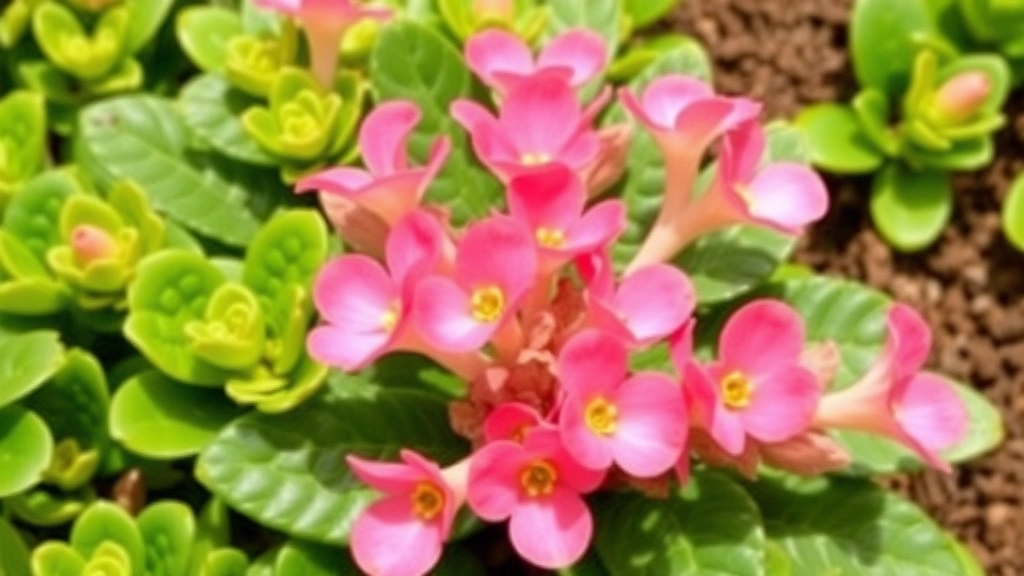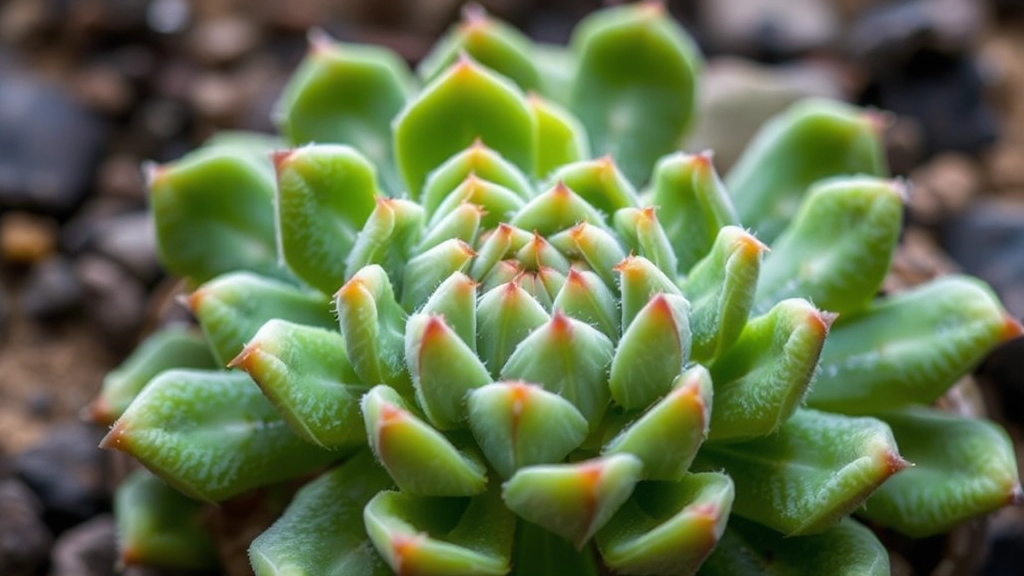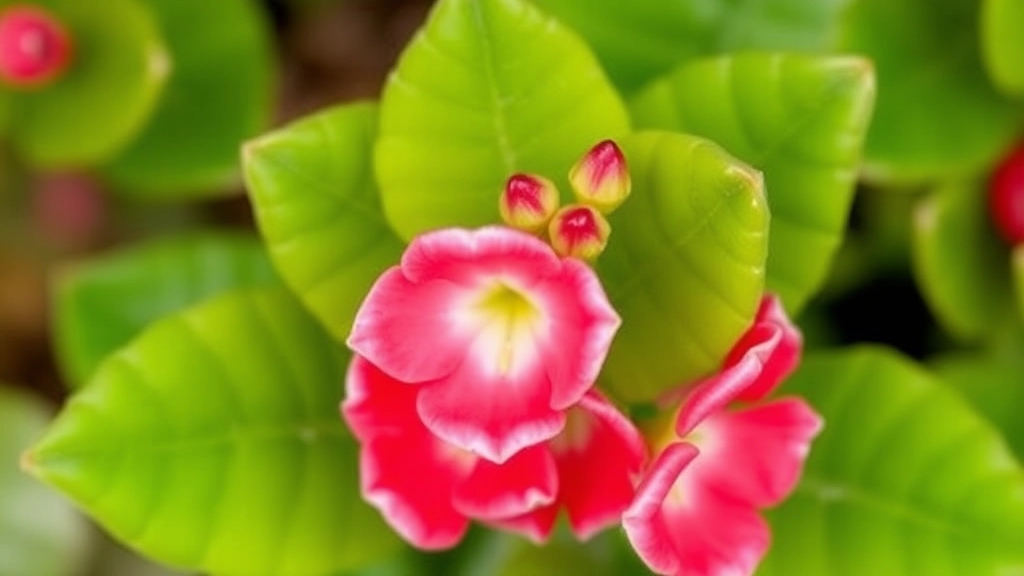Kalanchoe Delagoensis Tubiflora: The Mother of Thousands
Are you curious about the Kalanchoe Delagoensis Tubiflora, also known as the Mother of Thousands? This fascinating plant, often confused with its relative, the Kalanchoe Daigremontiana, has unique propagation methods and specific care requirements. In this article, I’ll guide you through the best practices for growing and maintaining this beautiful yet potentially invasive species.
Care Requirements
When it comes to caring for your Kalanchoe Delagoensis, understanding its light, water, and soil needs is crucial. This plant thrives in bright, indirect sunlight and requires well-draining soil to prevent root rot. Additionally, it’s important to manage its growth to prevent overcrowding and potential invasiveness. Let’s dive into the details to ensure your Mother of Thousands flourishes while keeping your garden safe and healthy.
Propagation of Kalanchoe Delagoensis
Are you struggling with how to propagate your Kalanchoe Delagoensis, commonly known as ‘Mother of Millions’? This succulent is not only beautiful but also easy to propagate, making it a favourite among plant enthusiasts.
Understanding Propagation Methods
Kalanchoe Delagoensis can be propagated through several methods:
- Leaf Cuttings:
- Select a healthy leaf.
- Allow it to callous for a few days.
- Place it in well-draining soil and water sparingly.
- Offsets:
- Look for small plantlets at the base of the mother plant.
- Gently remove them and replant in their own pots.
- Seeds:
- Collect seeds from mature plants.
- Sow them in a seed tray with a light soil mix.
- Keep them moist until germination.
Each method has its charm and can yield successful results when done correctly.
Timing is Key
The best time to propagate Kalanchoe Delagoensis is during the spring or early summer. This timing aligns with the plant’s natural growth cycle, giving your cuttings and offsets the best chance to thrive.
Tips for Success
- Use Sterilised Tools: To prevent disease, always use clean, sharp tools when taking cuttings.
- Provide Adequate Light: Ensure your new plants receive bright, indirect light to encourage healthy growth.
- Be Patient: It may take a few weeks for roots to establish, so resist the urge to overwater.
With these methods and tips, you can easily expand your collection of Kalanchoe Delagoensis. For more detailed guidance, check out our Mother of Millions care guide and learn how to propagate Kalanchoe successfully.
Caring for Kalanchoe Delagoensis: Light, Water, and Soil

So, you’ve got your Kalanchoe Delagoensis, and now you’re wondering how to keep it thriving, right?
Light
First off, let’s chat about light.
Kalanchoe Delagoensis loves bright, indirect sunlight.
- Ideal Spot: A south-facing window works wonders.
- Too Much Sun: If the leaves start to look scorched, it’s a sign to pull it back from direct sunlight.
Water
Next up is watering.
This plant doesn’t need a lot of moisture.
- Check the Soil: Always check if the top inch of soil is dry before watering.
- Watering Schedule: Generally, watering every two to three weeks is perfect.
- Avoid Overwatering: Yellowing leaves? That’s a red flag for overwatering.
Soil
Now, let’s talk soil.
Kalanchoe Delagoensis thrives in well-draining soil.
- Potting Mix: A cactus or succulent mix is ideal.
- Drainage: Ensure your pot has drainage holes to prevent water from sitting at the bottom.
Managing Growth and Preventing Overcrowding
As we delve deeper into caring for Kalanchoe Delagoensis, it’s essential to address how to manage its growth effectively. This plant can become quite prolific, and without proper management, it may lead to overcrowding.
Why Overcrowding Matters
Overcrowding can hinder the plant’s health and growth. When Kalanchoe Delagoensis becomes too dense, it competes for resources like light, water, and nutrients, which can stunt its development and lead to disease.
Tips for Managing Growth:
- Regular Pruning:
- Trim back excess growth to allow for better air circulation. For more detailed techniques, refer to our pruning guide.
- Remove any dead or yellowing leaves to promote overall health.
- Propagation Control:
- If you notice numerous offsets, consider propagating them to prevent overcrowding in the pot. Learn more about effective propagation methods in our propagation guide.
- This not only helps manage space but also allows you to share plants with friends or expand your collection.
- Repotting:
- Every couple of years, consider repotting your Kalanchoe Delagoensis into a larger container.
- This gives the roots more space to grow and prevents them from becoming root-bound.
- Spacing Considerations:
- When planting multiple Kalanchoe Delagoensis, ensure adequate spacing between plants to allow for their natural spread.
- A distance of at least 15-20 cm (6-8 inches) is advisable.
By implementing these strategies, you can maintain a healthy and thriving Kalanchoe Delagoensis that flourishes without becoming overcrowded.
Distinguishing ‘Mother of Millions’ from ‘Mother of Thousands’

As we explore the nuances of caring for Kalanchoe Delagoensis, it’s essential to understand how to differentiate between this plant and its close relative, Kalanchoe Daigremontiana, commonly known as ‘Mother of Thousands.’
Many people confuse these two due to their similar appearances and propagation methods.
Key Differences to Note:
- Leaf Structure:
Kalanchoe Delagoensis (Mother of Millions): Features elongated, smooth leaves with a slight wavy edge.
Kalanchoe Daigremontiana (Mother of Thousands): Has broader leaves with pronounced serrated edges. - Offsets:
Mother of Millions: Produces small plantlets along the edges of its leaves, which drop off easily and root in the soil.
Mother of Thousands: Also produces plantlets but tends to have them clustered more densely along the leaf margins. - Growth Habit:
Kalanchoe Delagoensis: Grows upright and can reach heights of up to 1 metre.
Kalanchoe Daigremontiana: Often has a more sprawling growth habit, making it appear bushier. - Flowering:
Both plants produce similar tubular flowers, but their flowering times may vary slightly depending on environmental conditions.
Why It Matters
Understanding these differences is crucial for proper care and management.
Misidentifying these plants can lead to incorrect care practices, affecting their growth and health.
If you mistakenly treat a ‘Mother of Thousands’ like a ‘Mother of Millions,’ you might find yourself overwhelmed with unwanted plantlets.
Legal Concerns and Toxicity of Kalanchoe Delagoensis
When considering adding Kalanchoe Delagoensisâcommonly known as ‘Mother of Millions’âto your collection, it’s crucial to be aware of its legal status and potential toxicity.
Legal Concerns
In some regions, Kalanchoe Delagoensis is classified as an invasive species.
- Regulations: Certain areas may have restrictions on its sale or cultivation.
- Environmental Impact: Its ability to spread rapidly can disrupt local ecosystems.
- Local Laws: Always check your local regulations to ensure compliance.
Toxicity
Kalanchoe Delagoensis contains compounds that can be harmful, particularly to pets and humans.
- Symptoms of Toxicity: Ingestion may lead to gastrointestinal upset, vomiting, or more severe reactions.
- Pets at Risk: Cats and dogs are particularly vulnerable; keep the plant out of reach.
- Human Precautions: While not typically dangerous to adults, it’s wise to avoid ingestion and wash hands after handling.
If you’re interested in more detailed care tips for this plant, you might find our Complete Guide to Caring for Kalanchoe Mother of Millions Plant helpful. Additionally, for propagation tips, check out our guide on How to Propagate Kalanchoe Mother of Thousands Easily.
FAQs about Kalanchoe Delagoensis (Mother of Millions) and Kalanchoe Daigremontiana (Mother of Thousands)
What kind of light does Kalanchoe Delagoensis need?
Kalanchoe Delagoensis thrives in bright, indirect sunlight. A south-facing window is ideal. If the leaves start to look scorched, it’s a sign that the plant is getting too much direct sunlight.
How often should I water my Kalanchoe Delagoensis?
Watering every two to three weeks is generally sufficient. Always check if the top inch of soil is dry before watering. Yellowing leaves are a sign of overwatering, which should be avoided.
What type of soil is best for Kalanchoe Delagoensis?
This plant prefers well-draining soil. A cactus or succulent mix is ideal. Ensure your pot has drainage holes to prevent water from sitting at the bottom.
How can I distinguish between Kalanchoe Delagoensis (Mother of Millions) and Kalanchoe Daigremontiana (Mother of Thousands)?
Key differences include:
- Leaf Structure: Kalanchoe Delagoensis has elongated, smooth leaves with a slight wavy edge, while Kalanchoe Daigremontiana has broader leaves with pronounced serrated edges.
- Offsets: Mother of Millions produces small plantlets along the edges of its leaves that drop off easily, whereas Mother of Thousands has plantlets clustered more densely along the leaf margins.
- Growth Habit: Kalanchoe Delagoensis grows upright and can reach heights of up to 1 metre, while Kalanchoe Daigremontiana often has a more sprawling growth habit.
- Flowering: Both produce tubular flowers, but their flowering times may vary slightly depending on environmental conditions.
Why is it important to correctly identify these plants?
Proper identification is crucial for correct care and management. Misidentifying the plants can lead to incorrect care practices, affecting their growth and health. For instance, treating a ‘Mother of Thousands’ like a ‘Mother of Millions’ could result in an overwhelming number of unwanted plantlets.
References
-
The Spruce – Kalanchoe Delagoensis Care Guide
-
Gardening Know How – Caring for Kalanchoe
-
Succulent Alley – Kalanchoe Delagoensis Care Guide
